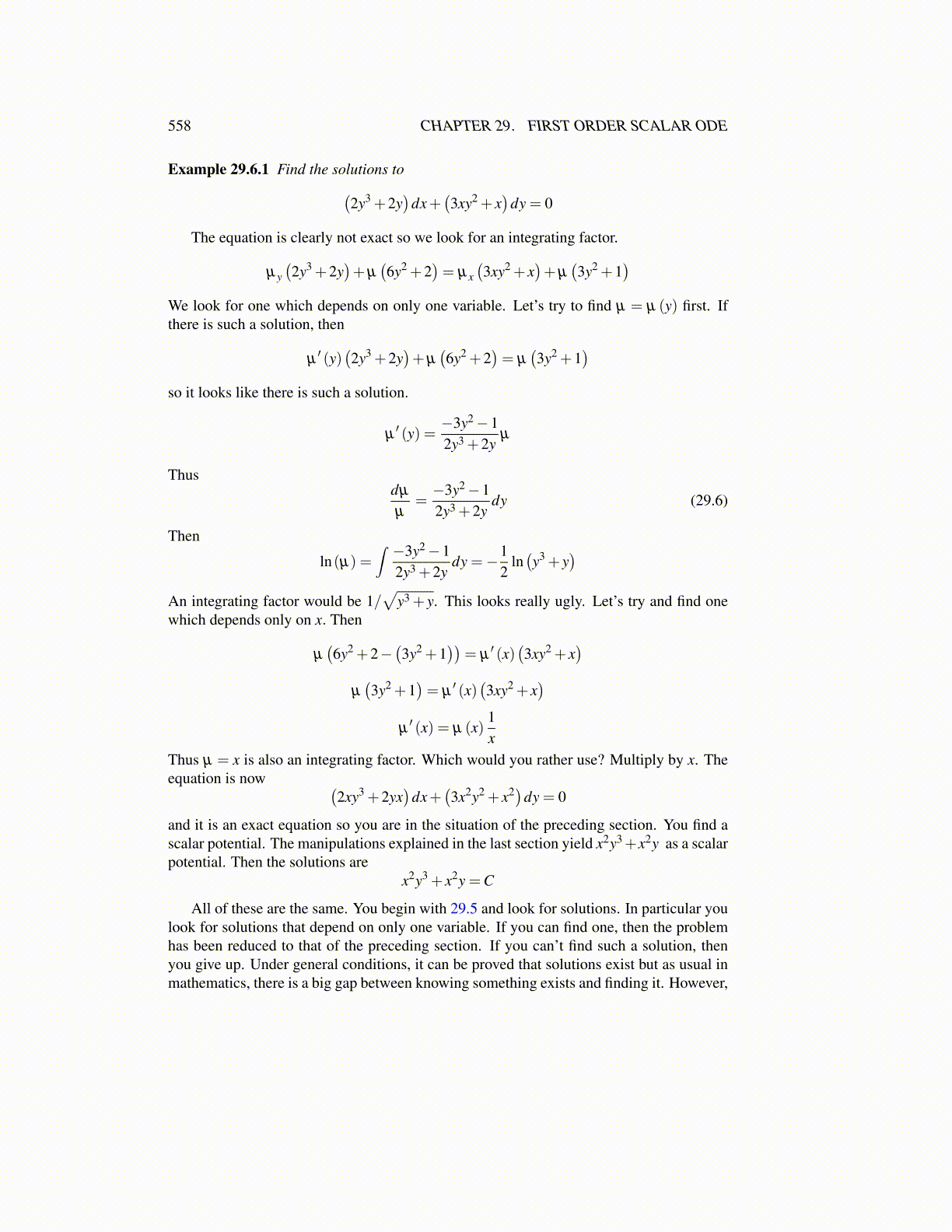
558 CHAPTER 29. FIRST ORDER SCALAR ODE
Example 29.6.1 Find the solutions to(2y3 +2y
)dx+
(3xy2 + x
)dy = 0
The equation is clearly not exact so we look for an integrating factor.
µy(2y3 +2y
)+µ
(6y2 +2
)= µx
(3xy2 + x
)+µ
(3y2 +1
)We look for one which depends on only one variable. Let’s try to find µ = µ (y) first. Ifthere is such a solution, then
µ′ (y)
(2y3 +2y
)+µ
(6y2 +2
)= µ
(3y2 +1
)so it looks like there is such a solution.
µ′ (y) =
−3y2−12y3 +2y
µ
Thusdµ
µ=−3y2−12y3 +2y
dy (29.6)
Then
ln(µ) =∫ −3y2−1
2y3 +2ydy =−1
2ln(y3 + y
)An integrating factor would be 1/
√y3 + y. This looks really ugly. Let’s try and find one
which depends only on x. Then
µ(6y2 +2−
(3y2 +1
))= µ
′ (x)(3xy2 + x
)µ(3y2 +1
)= µ
′ (x)(3xy2 + x
)µ′ (x) = µ (x)
1x
Thus µ = x is also an integrating factor. Which would you rather use? Multiply by x. Theequation is now (
2xy3 +2yx)
dx+(3x2y2 + x2)dy = 0
and it is an exact equation so you are in the situation of the preceding section. You find ascalar potential. The manipulations explained in the last section yield x2y3+x2y as a scalarpotential. Then the solutions are
x2y3 + x2y =C
All of these are the same. You begin with 29.5 and look for solutions. In particular youlook for solutions that depend on only one variable. If you can find one, then the problemhas been reduced to that of the preceding section. If you can’t find such a solution, thenyou give up. Under general conditions, it can be proved that solutions exist but as usual inmathematics, there is a big gap between knowing something exists and finding it. However,